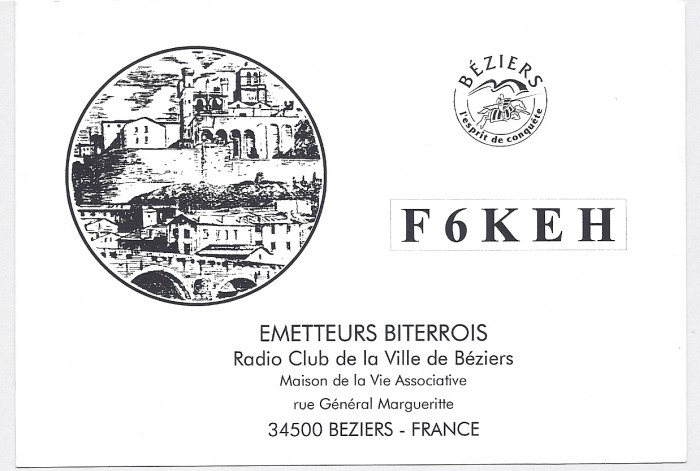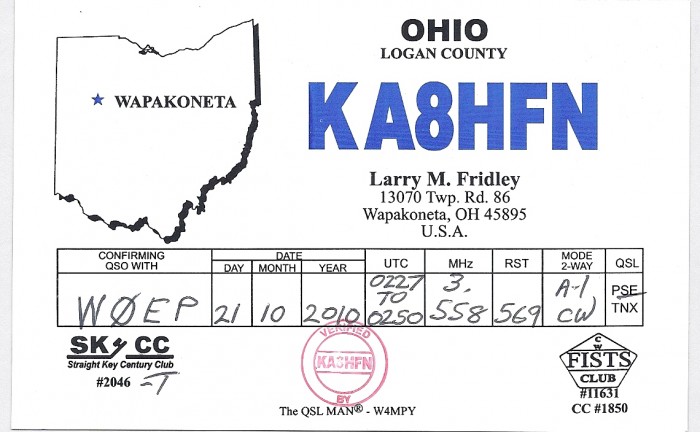[Today’s run Watson Road 3.5 miles]
This is a QSL Card.
In ham-radio-speak, QSL means “confirmation”, so this is a postcard that confirms a contact. On the reverse side it has information about the date, time, and frequency of the contact.
This card is from a radio club in France, as you can see.
It has been a longstanding tradition in the amateur radio world to send these postcards to follow-up with confirmation of a contact. In the early days of radio any contact was an adventure. So it makes some sense that someone would spend another few cents to send a postcard.
These days with email, cheap telephones, etc. the postcard is probably the most expensive option!
But there are other purposes for QSL cards. The main “secondary” purpose is to have a physical confirmation that you can show to other people. And this is important if you are into the aspects of radio that involve contests to see how many rare and obscure countries and stations you can talk to; “confirmation” becomes “proof”.
This card came via the “burro” (the bureau). A group of vounteers in almost every country in the world act as a clearinghouse for QSL cards for the hams of their country. I’ll send back a card also using the ARRL outgoing QSL card bureau. When I get a pile I will send them to the ARRL and they will be sorted and grouped with others to that country, slowly to make their way to that other ham across the world.
A third use of QSL cards is as a source of history. There is a book
Hello World: A life in ham radio which consists mainly of QSL cards from the collection of one ham. Other people have done various studies and articles using QSL cards to research early radio history.
A last (but not least) use of QSL cards is as a source of income. Many hams in far away countries don’t use the “burro”. If you want a postcard from them to show to your friends, you have to send them “green stamps”. Can you guess what a “greenstamp” is? I’ll give you a hint: it has George Washington’s picture on it. That helps those hams stay on the air.

